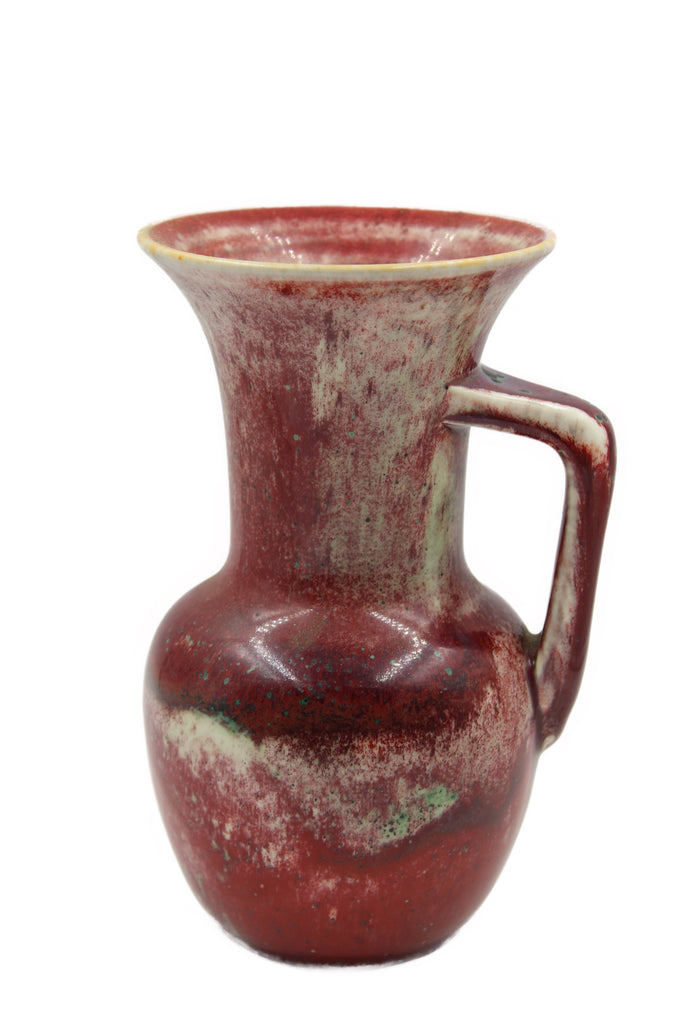A Ruskin single-handed vase decorated with a high fired sang-de-bœuf glaze
RUSKIN POTTERY
West Smethwick . 1933.
A Ruskin single-handed vase with a wide-flared neck decorated with a high fired sang-de-bœuf and mottled green and white glaze with specks of green and black. 200mm high, 115mm wide at opening. Base is marked "Ruskin. 1933. England". A beautiful example of the distinctive Ruskin High Fired Flambé process in one of the most striking colours used by the pottery.
As William Howson Taylor explained in his 1912 booklet on Ruskin Pottery (see previous item), the aims of the Pottery were "good potting, beauty of form, and rich or tender colouring". "The colourings range from slightly broken colours, through gradations of two colours to textures and patternings rivalling cloisonné enamels and suggestive of the rich hues seen in rock pools at low tide". He describes the "real Flambé colours, each piece being unique and unrepeatable. The colourings, textures and patternings of this real Flambé are as varied as is the number of individual pieces, and they include sang de bœuf, peach bloom, crushed strawberry...". Copper oxides were mixed into the glazes which were then fired at between 1300 and 1600 degrees centigrade using the technique of reduction firing in which the amount of oxygen in the kiln is slowly reduced. The results were stunning. As Howson Taylor says: "the Ruskin Flambé have been submitted to the great heat of the potter's furnace which gives the full interpenetrative and palpitating colour effects - changes from splendour to splendour".
A Ruskin single-handed vase with a wide-flared neck decorated with a high fired sang-de-bœuf and mottled green and white glaze with specks of green and black. 200mm high, 115mm wide at opening. Base is marked "Ruskin. 1933. England". A beautiful example of the distinctive Ruskin High Fired Flambé process in one of the most striking colours used by the pottery.
As William Howson Taylor explained in his 1912 booklet on Ruskin Pottery (see previous item), the aims of the Pottery were "good potting, beauty of form, and rich or tender colouring". "The colourings range from slightly broken colours, through gradations of two colours to textures and patternings rivalling cloisonné enamels and suggestive of the rich hues seen in rock pools at low tide". He describes the "real Flambé colours, each piece being unique and unrepeatable. The colourings, textures and patternings of this real Flambé are as varied as is the number of individual pieces, and they include sang de bœuf, peach bloom, crushed strawberry...". Copper oxides were mixed into the glazes which were then fired at between 1300 and 1600 degrees centigrade using the technique of reduction firing in which the amount of oxygen in the kiln is slowly reduced. The results were stunning. As Howson Taylor says: "the Ruskin Flambé have been submitted to the great heat of the potter's furnace which gives the full interpenetrative and palpitating colour effects - changes from splendour to splendour".
